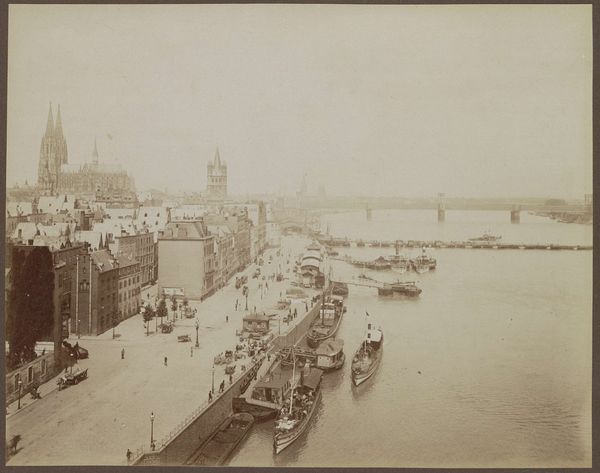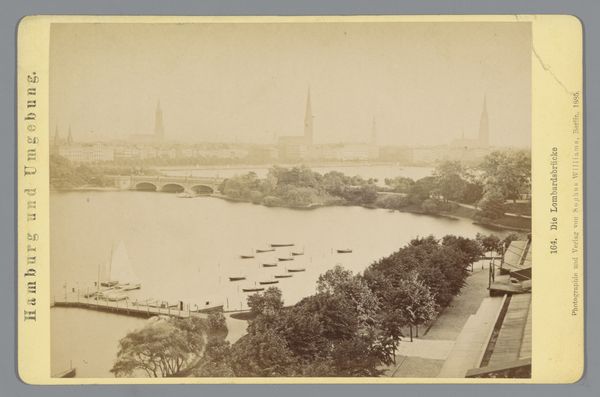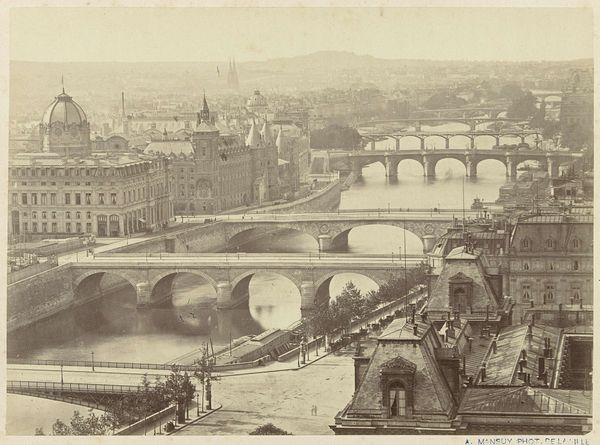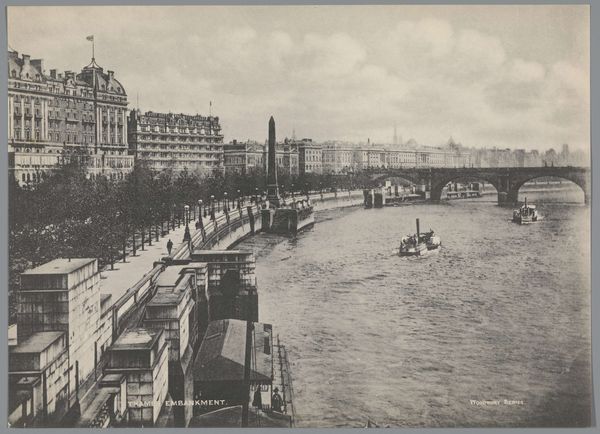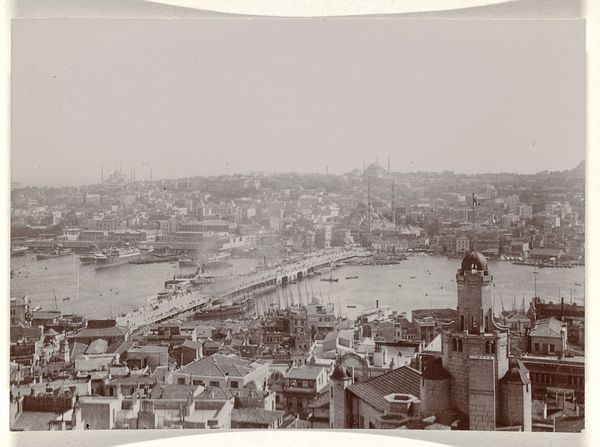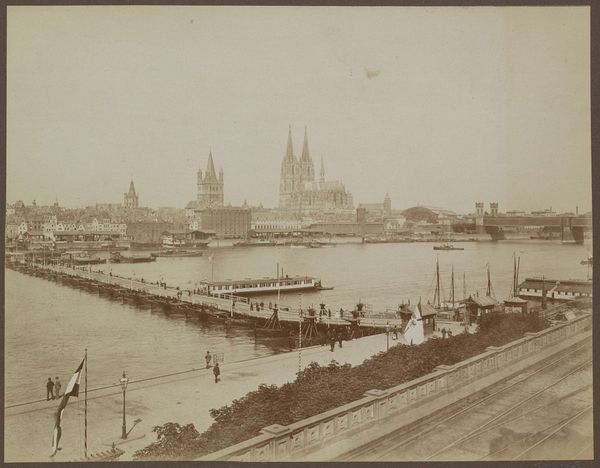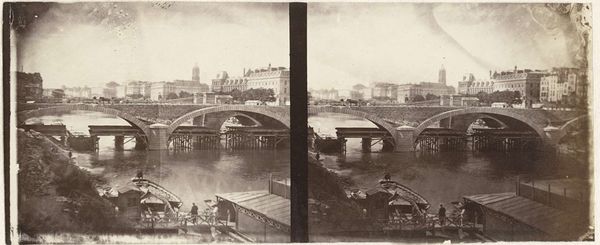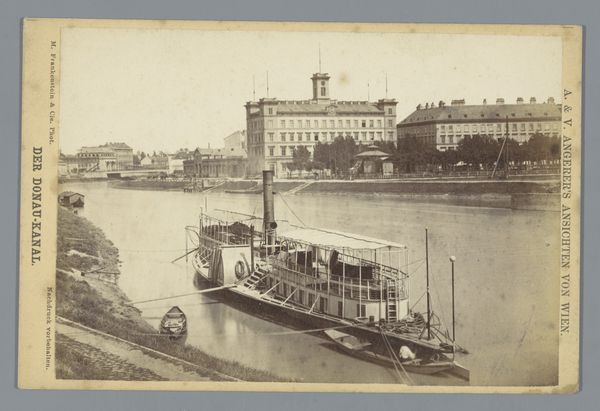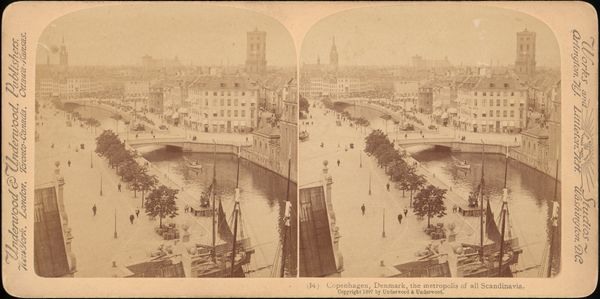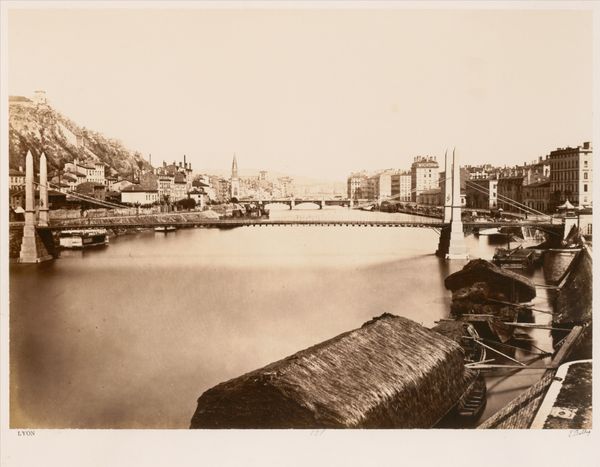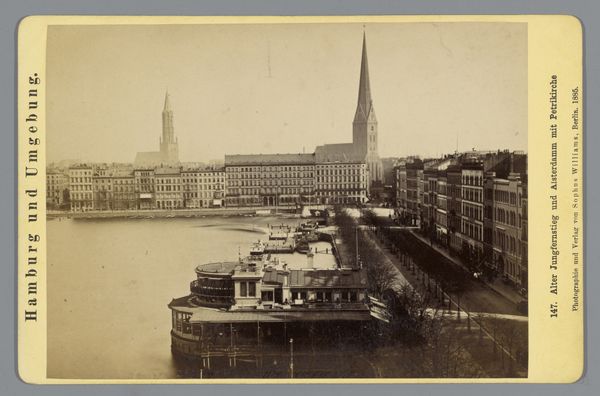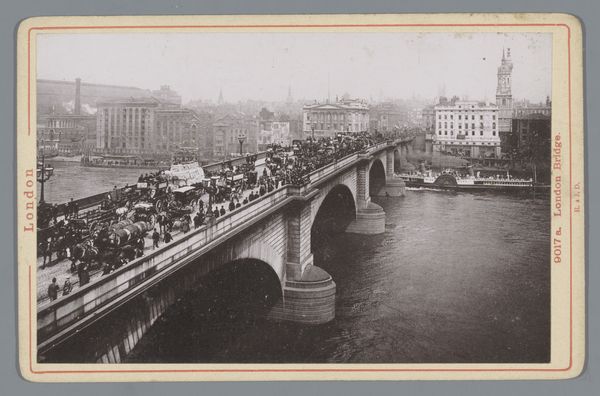
Dimensions: height 134 mm, width 203 mm, height 244 mm, width 316 mm
Copyright: Rijks Museum: Open Domain
Curator: Here we have "Gezicht op de Clyde in Glasgow," a photograph captured sometime between 1851 and 1880, attributed to James Valentine. It is a compelling cityscape rendered in monochrome tones. Editor: My first impression is one of subdued industry. The tones feel heavy, almost melancholic, as if capturing a city working through a perpetual fog. Curator: It’s fascinating how these early photographs encapsulate the spirit of the industrial revolution. Glasgow at this time was undergoing immense social and economic shifts. We see a dense urban environment, which speaks to evolving class dynamics and the relentless drive for progress. How are visual symbols playing into your experience here? Editor: Bridges, in general, represent connections between disparate places. The bridge spanning the Clyde becomes a strong symbol of Glasgow's industrial might, linking its productive forces and facilitating commerce, also connecting to Scotland's ambition on the global stage through ships. I feel a profound sense of longing conveyed, looking at these symbolic bridges of opportunity and expansion. Curator: The use of Pictorialism here is crucial to note. This wasn’t just documentary photography; Valentine actively crafted an aesthetic, imbuing the scene with a specific mood. This romanticized approach might, arguably, soften the harsh realities of industrial labor prevalent at the time. The selective focus emphasizes certain aspects of city life, which serves an ideological purpose by visually legitimizing these scenes. Editor: Pictorialism does contribute to that sense of idealized past; it adds an additional layer of emotional distance. There’s an aesthetic yearning for an industrial reality in sharp focus, where all symbolic meanings are present in full visual splendor. However, that artistic manipulation in photography should remind the modern viewer of how social and cultural contexts shift meanings. Curator: That push and pull is crucial to understanding its enduring appeal. The photograph documents but also obscures. It shows a city in progress but conceals the lived realities of those driving that progress. Editor: True. Gazing at it, the image is a reminder to look at photographs with historical awareness, acknowledging that these aren't just snapshots, but windows shaped by cultural memory and symbols loaded by the prevailing mindset. Curator: Precisely. Art like this pushes us to ask who is visible and who is hidden in the narratives of progress. Editor: Yes, images speak louder when you decipher their symbolic alphabet.
Comments
No comments
Be the first to comment and join the conversation on the ultimate creative platform.
